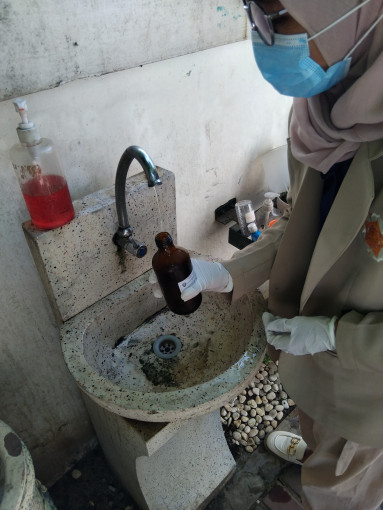
Clean water is a basic necessity for communities, including those in Yogyakarta. The city’s high population density has increased its residents’ demand for clean water.
Data from PDAM Tirtamarta, one of the providers of clean water in Yogyakarta, shows that as of Jan. 30, 2023, 9.23% of the city’s population uses PDAM services.
This means that over 90% of Yogyakarta’s residents rely on groundwater (wells) or other sources for their clean water needs.
Unfortunately, research has found 40% Escherichia coli contamination in nearly all wells in Yogyakarta. This contamination can cause diarrhea and impact stunting rates in the long term.
Inadequate well construction or drilling is suspected of contributing to E. coli contamination in residents’ wells.
The Yogyakarta Mayor Regulation No. 28 of 2013 on Groundwater Licensing in Yogyakarta City Government outlines regulations regarding well construction permits.
Although applicable only administratively, the regulation states that household well construction does not require a permit. This condition raises concerns about potential social and economic problems for residents.
This prompted Adelvin Pradana Putra Mujiono, a 2022 Economics student at the UGM Faculty of Economics and Business (FEB UGM), to conduct research on this phenomenon, particularly in the Kotagede area, a center for tourism and culture in Yogyakarta.
Adelvin Mujiono conducted the research with Parahita Janu Arundati (Economics 2022), Syafina Kinaya Amelia (Law 2022), Meidita Farah Widodo (Environmental Infrastructure Engineering 2022), and Sabri Indrajati (Sociology 2022).
Their research, “Analysis of Poor Water Quality in Kemantren Kotagede: Legal Gaps and Socioeconomic Impacts,” received research grant funding from the Ministry of Education and Culture through the 2024 Student Creativity Program for Social Sciences and Humanities Research (PKM-RSH).
Through this research, they aim to delve deeper into the legal gaps in groundwater use permits in Yogyakarta.
Additionally, they seek to understand the social impacts and economic losses caused by poor water quality in Kotagede.
Mujiono explained that their research, which began in January 2024, found high levels of microbiological contamination in residents’ wells due to septic tank waste affecting groundwater or well water.
“Most (58.3%) of the septic tanks in residential homes in Kotagede are unsafe from wells. According to the National Standardization Agency (BSN), the safe distance between a septic tank and a well is 10 meters,” he said on Wednesday, Jul. 17 at FEB UGM.
On the other hand, Mujiono noted a gap between central and local regulations.
This gap is evident from the issuance of the Minister of Energy and Mineral Resources Decree No. 291.K/GL.01/MEM.G/2023 on Groundwater Use Approval Standards, which explicitly regulates groundwater use or exploration permits.
Additionally, there is Law No. 17 of 2019 on Water Resources, which regulates water resource management.
However, the Yogyakarta City Government has not yet updated the latest regulations, as no new local regulations have been issued to implement further the new rules on well construction and related matters.
According to Mujiono, local government authorities must promptly address the latest regulations and the phenomenon of contaminated water.
This way, the regulations can act as a preventive and repressive response to groundwater contamination’s short-term and long-term impacts.
Other research findings show that the Kotagede community is aware of the poor water quality in their area.
One response has been the use of water filters by residents in Prenggan, particularly those living around the Gajahwong River.
Additionally, waste management in the area has been integrated through a communal wastewater treatment plant (IPAL Komunal) established by the Yogyakarta City Government.
“We found that the communal wastewater treatment plant is less than 5 meters from wells with installed water filters. It is hoped that there will be an evaluation of the optimality of the construction of communal wastewater treatment plants close to residents’ wells in the future,” he concluded.
Report by: Kurnia Ekaptiningrum
Post-editor: Lintang

